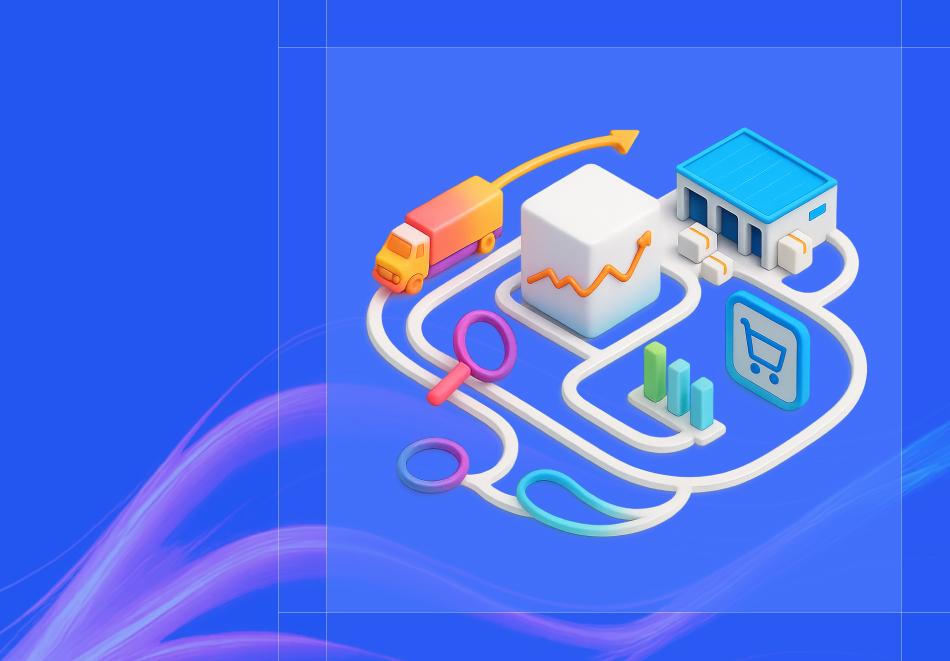Introduction
Pharmaceutical and chemical manufacturing companies face greater risks when it comes to inventory control than some other industries. Why? Because some of the same chemicals used to make effective medicines can also create addictive street drugs. For example, ephedrine, which is used to treat breathing problems, is also an active ingredient in methamphetamine. The Food and Drug Administration has strict rules for companies making and distributing drugs. All companies, especially those in the pharmaceutical sector, want to run their warehouses efficiently. Common efficient warehouse management includes:
- Maximizing and optimizing all available space
- Keeping inventory to lean levels
- 50% of enterprises spend more than $1.2 million each year on cloud services
- Using inventory tracking technology efficiently
- Organizing the workforce so its time is used wisely
Warehouse management best practices also emphasize the “3 C’s”: control, coordination and communication. Standard practices, where control is maintained by only one department, usually results in difficult coordination and communication between departments such as sales and finance.
Enterprise resource management (ERP) software with warehouse management and inventory control modules can help manage warehouse inventory.
Maximizing Warehouse Space
Maximizing warehouse space includes stacking items logically, and using vertical space to your advantage.
The Centers for Disease Control (CDC) suggests hazardous chemicals be labeled with hazard warnings and the chemical name. Other chemical storage tips from the CDC include:
- Keeping all stored chemicals, especially flammable liquids, away from direct sunlight and heat.
- Keeping like chemicals together and away from those that might cause a reaction if mixed.
- Storing liquids in unbreakable or double-contained packaging.
- Storing flammable materials, acids and highly toxic or controlled materials in dedicated cabinets designed for those purposes.
- Storing volatile and odorous chemicals in a ventilated cabinet.
- Keeping all unused or empty compressed gas cylinders in a dedicated storage area.
Figure: 1Maximizing Warehouse Space
Use ERP to Run Lean
ERP software often includes warehouse management tools and technology designed to help companies balance inventories with current and future needs.
For example, warehouse management is integrated into Microsoft Dynamics 365’s Supply Chain Management. There’s even a connected Warehousing app available on the Google Play Store and Windows store that connects cellphones and other mobile devices to the network running D365’s Supply Chain Management. Each device must have its own copy of the app and be configured to connect to the local warehouse computer network.
Microsoft’s warehouse management module apps let workers use their cellphones, tablets or other connected devices to perform activities such as:
- Printing and reprinting labels
- Generating license plate numbers, confirming item types and quantities on a license plate or pallet and splitting full license plates
- Starting production orders
- Get information about particular items in a location
These warehouse management software settings can be configured to allow users different permissions in different warehouse locations. Software such as Microsoft Intune is used to mass deploy settings and service warehouse mobile devices.
Once devices are configured, cellphone cameras can be used to scan many common barcodes, including QR codes.
Another important part of the warehouse management module is the Transportation Management function. It lets workers register when a driver arrives, noting the driver’s name and license number, tractor and trailer number plus the location in the warehouse (e.g., Receiving Bay 1, Shipping Bay 3, etc.).
A key function for the pharmaceutical industry is setting work audit templates to interrupt an inbound order. Since many medicines require strict environmental controls, workers can be prompted through the audit template to check the temperature in delivery containers. They can then be told to check a particular container at a particular point in the receiving process.
Another method of boosting efficiency and controlling warehouse inventory is by requiring warehouse workers to confirm the product, location or quantity when they pick items. This reduces the likelihood of inventory errors caused by inaccurate counts.
Improving Efficiency With an ERP
When IDC conducted its 2018 survey, 45% of independent service vendor customers preferred the lift and shift cloud migration method for moving business applications. Combined with cloud computing, 69% of end customers understand the positive implications of using cloud-based software. These include agility, scalability, cost effectiveness, efficiency and others.
Is Cloud Computing Worth the Cost?
One reason many companies purchase an ERP is its ability to help them run their day to day operations more efficiently. One example is the ability to use an intelligent warehouse management system to cluster purchase order putaways. Workers put away products in a specific area and then pick multiple license plates at once before putting them away in different locations.
In a related activity, workers can check incoming product quality before technically receiving it and taking ownership of it. D365’s Warehouse Management module lets users log these checks with mobile devices.
This same intelligent warehouse management system also lets pharmaceutical companies efficiently process purchase order returns. The item is entered into Supply Chain Management and then scanned, starting the process. Items being returned are picked and sent through the warehouse process using mobile devices. The software also creates the shipment and load.
Similar configuration settings help inventory, procurement and delivery management become more efficient. Workers are no longer moving randomly from place to place within a warehouse, picking items from six different locations for a single order. Instead, they might pick items for six different license plates from the same general location, move to a second spot and add additional items. By using this method, each worker’s time is used to maximize the amount of actual work done, achieving more production.
ERPs and Inventory Management Techniques
Six of the most common inventory management techniques are:
- Bulk shipments
- ABC Inventory Management
- Backorders
- Just in Time (JIT) shipping
- Consignments
- Cycle counting
An innovative warehouse management system helps executives decide when buying in bulk is appropriate and when going lean is better. How? By sharing data with sales, finance and other departments. Warehouse managers can see what sales are coming up and know what raw materials to order.
The same situation applies to deciding what to produce and what to have in inventory based on importance. Data shared between systems lets managers make and adjust these calculations.
Backorders are becoming more common as Covid-19 related issues delay raw material shipments. While using them is a common warehouse management technique, effective ERP software helps firms control backorders and order materials from alternate suppliers.
Just In Time (JIT) inventory management reduces the amount of stock available at any given time to the bare minimum. Using D365 Supply Chain Management lets chief executive officers understand the complete supply chain. They can decide what items to get only when needed and what to buy in bulk.
Combined with precise inventory tracking to know when a specific medication is approaching its expiration date, pharmaceutical manufacturers can use consignment selling with confidence. Alerts will let them know when they need to refresh a seller’s stock.
Cycle counting, where workers count only a small quantity of product, is rendered nearly obsolete by an ERP. Using barcodes and electronic scanners, warehouse managers have an accurate idea of inventory at all times.
The Future of Warehouse Management
The future of warehouse management systems isn’t workers running around with pencils and clipboards. Instead, it’s automating many manual processes with real-time access to critical data.
“Warehouses will be built on current effective process-driven technologies such as widespread supply chain automation, hyper-effective robotic technologies and yes, plenty of drones to go around,” 6 River Systems predicts.
Leading that charge will be artificial intelligence-enabled ERP software coupled with industrial internet of things (IIoT) sensors. This combination will enable pharmaceutical companies to more efficiently track materials as they run their businesses.
Minimize redundancy and maximize your warehouse productivity. Book a consultation to learn how.








